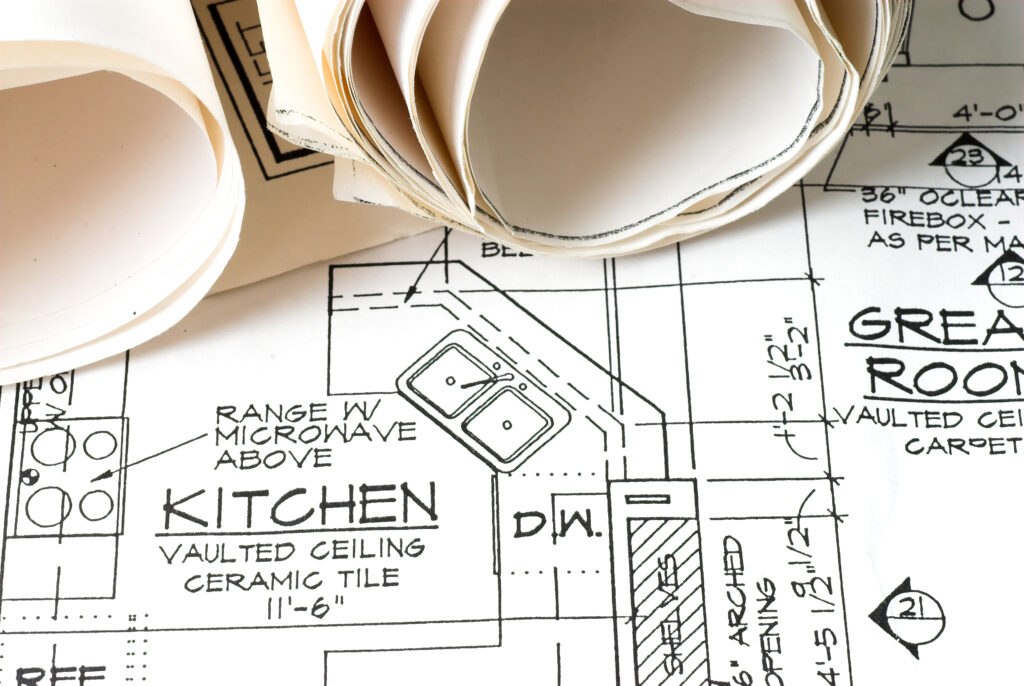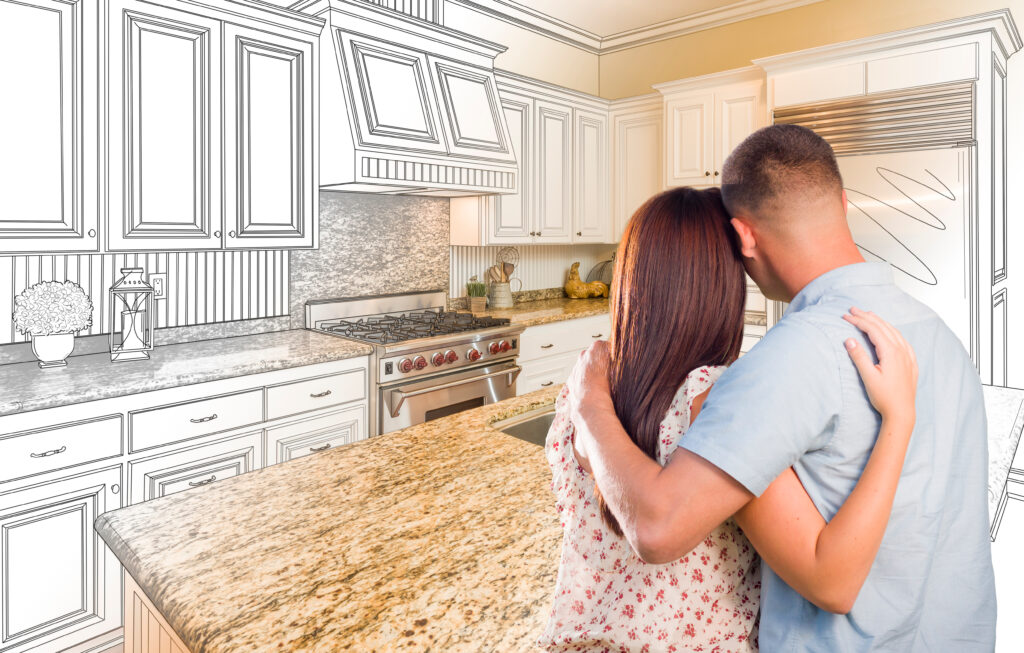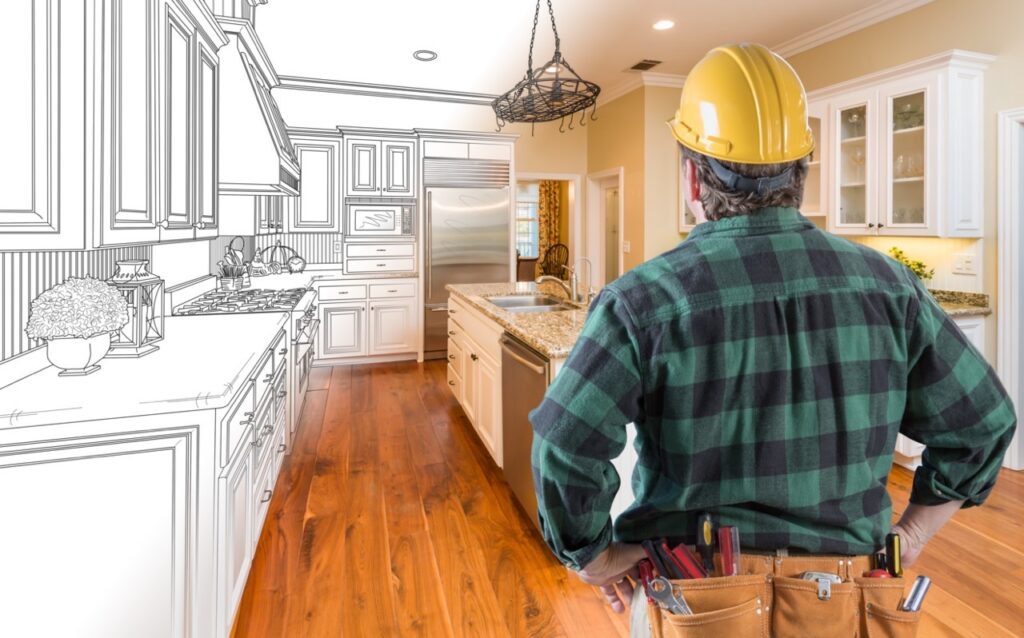Kitchen Renovations 101: A Beginner’s Guide to Transforming Your Kitchen

As a homeowner, one of the most exciting things you get to do is put your own personal touch on your home through design, décor, and renovations. Most seasoned homeowners will tell you that while the result is usually worth it, getting started in any major renovation—especially a kitchen renovation—can be overwhelming. There are a lot of decisions to make, people to call, and money to spend. Sinkology goes beyond the kitchen sink to support our customers through every step of your renovation or update, and our kitchen renovations guide will outline the most important items to consider now that you’ve decided to renovate your kitchen.
The most important step to take is to plan out your project in as much detail as you can when you begin your renovation. Below is a checklist of topics and decisions to review. If you have a spouse, partner, or other people that the project will impact or if you are making decisions jointly, be sure to review these topics before you begin your renovation to ensure a smoother process.
- Set Goals and Priorities: Determine why you want to renovate your kitchen and establish your goals. Are you seeking improved functionality, upgraded aesthetics, increased storage, or a combination of factors? Clearly defining your objectives will guide your decision-making process.
- Assess Your Budget: Determine your budget for the renovation project. Evaluate your financial resources and set realistic expectations about what you can afford. Consider factors such as materials, labor costs, and any additional expenses, such as permits or professional fees.
- Gather Inspiration: Explore various sources for kitchen design inspiration. Browse home improvement magazines, websites, social media platforms, and visit showrooms or home expos. Collect images, ideas, and styles that resonate with you to create a visual reference for your project.
- Research and Educate Yourself: Take the time to research different aspects of kitchen renovations. Learn about various materials, finishes, appliances, and design trends. Understanding the available options and their pros and cons will help you make informed decisions throughout the process.
- Evaluate the Current Kitchen: Assess your existing kitchen space critically. Identify its strengths and weaknesses, considering layout, storage, lighting, and functionality. Determine what aspects of your kitchen need improvement and what can be retained or repurposed.
- Seek Professional Advice: Depending on the complexity of your renovation project, it may be helpful to consult with professionals such as kitchen designers, architects, or contractors. They can provide valuable insights, offer expert advice, and help you evaluate the feasibility of your ideas within your budget.
- Create a Plan and Timeline: Based on your goals, budget, and research, create a detailed plan for your kitchen renovation. Outline the desired changes, prioritize tasks, and establish a realistic timeline for the project. Keep in mind that unexpected delays or challenges may arise, so allow some flexibility in your schedule.
- Obtain Necessary Permits: Check with your local building department to determine if any permits are required for your renovation. Some projects, especially those involving structural changes or electrical and plumbing work, may require permits to ensure compliance with building codes and regulations.

Before diving into a kitchen renovation, it’s crucial to establish a budget that aligns with your financial resources and goals. Costs can vary significantly depending on factors such as the size of your kitchen, desired materials, and the extent of the renovation. On average, renovating an entire single-family home kitchen can range from $15,000 to $50,000, but keep in mind that this is a rough estimate and prices can vary widely.
Certain aspects of kitchen renovations tend to be more expensive than others. Cabinetry, countertops, and appliances often constitute a significant portion of the budget. Custom cabinets and high-end materials can drive up costs, while more affordable options can still provide great results. Additionally, electrical and plumbing work may require professional assistance, which can add to the overall expenses.
Making Key Design Decisions in a Kitchen Renovation
When it comes to the design aspects of renovating a kitchen, the order in which you select various elements such as countertops, cabinetry, flooring, and appliances is a matter of personal preference. However, there are some considerations that can help you make informed decisions:
- Overall Design Vision: Before diving into specific elements, it’s essential to have a clear vision of the overall design style you want to achieve in your kitchen. Consider factors such as modern, traditional, farmhouse, minimalist, or eclectic aesthetics. This vision will guide your decision-making process and ensure a cohesive look.
- Cabinetry: In many kitchens, cabinetry tends to be a dominant visual element, as it covers a significant portion of the space. If you have a particular cabinetry style or finish in mind, you may want to start by selecting your cabinets first. This allows you to build the rest of the design around them.
- Countertops: Countertops play a vital role in both aesthetics and functionality. They can serve as a statement piece or provide a neutral backdrop for other design elements. Once you have an idea of your preferred countertop material (such as granite, quartz, marble, or laminate), you can consider the colors and patterns that complement your chosen cabinetry.
- Flooring: Flooring selection can be influenced by the overall design style and the color scheme of your kitchen. Some homeowners prefer to choose flooring early in the process as it can impact the selection of other elements. For example, if you opt for dark hardwood flooring, you might prefer lighter cabinetry or countertops to create contrast.
- Appliances: When it comes to selecting appliances, there are two main approaches. Some homeowners prefer to choose their appliances early in the process, ensuring that the sizes and styles they select fit seamlessly within the design. Others prefer to select appliances after finalizing other elements, considering them as finishing touches that complement the overall aesthetic.
- Color Palette: While not specific to any particular element, determining your color palette is crucial in achieving a cohesive design. Consider how the colors of your countertops, cabinetry, flooring, and appliances work together. Some popular color schemes include neutral tones, contrasting colors, or monochromatic palettes.
Remember, there’s no set rule for the order in which you select these design elements. It often comes down to personal preferences and priorities. However, it’s generally recommended to have a clear vision of the overall design style and consider elements that have a significant visual impact, such as cabinetry and countertops, early in the process. This way, you can ensure that your choices align with your desired aesthetic and create a harmonious kitchen design.

To ensure a smooth renovation journey, it’s important to plan the order in which the renovations will take place. Although variations exist based on individual preferences, a typical sequence involves the following steps:
- Demolition and Removal: Start by clearing out the existing kitchen space, including old cabinets, countertops, and appliances.
- Structural Changes: If you plan to reconfigure the layout, make structural alterations such as removing or adding walls, relocating plumbing, or modifying electrical wiring.
- Plumbing and Electrical Work: Hire licensed professionals to handle any plumbing or electrical tasks, including installing new fixtures, wiring, and outlets.
- Flooring: Install new flooring, such as tiles, hardwood, or vinyl, depending on your preferences and budget.
- Cabinetry and Countertops: Install new cabinets and countertops, considering the materials, finishes, and hardware that match your desired style.
- Appliances: Integrate new appliances into the kitchen, ensuring they are properly connected and functioning.
- Backsplash and Wall Finishes: Add a backsplash and paint or wallpaper the walls to complement the overall design.
- Lighting and Fixtures: Install lighting fixtures, including overhead lights, under-cabinet lighting, and decorative accents.
- Finishing Touches: Complete the renovation with details like installing your new sink and faucet, adding decorative elements, and organizing storage spaces.

While some aspects of a kitchen renovation can be tackled as do-it-yourself (DIY) projects, others are best left to professionals. DIY-friendly tasks include painting, minor demolition, assembling and installing prefabricated cabinets, and adding decorative elements. However, complex tasks such as electrical and plumbing work, structural modifications, and countertop installations generally require professional expertise to ensure safety and quality results.
In addition, the amount of time you have for your project can impact your need to hire a professional to help. The duration of a kitchen renovation can vary depending on the scope of work, availability of materials, and contractor and laborer schedules. On average, a comprehensive kitchen renovation can take anywhere from four to eight weeks. Keep in mind that unforeseen complications or delays can occur, so it’s important to remain flexible and patient throughout the process.

Renovating your kitchen can transform it into a beautiful and functional space that suits your lifestyle and reflects your personal style. By carefully considering your budget, planning the renovation process, making key decisions, and deciding when to call in professionals, you can navigate the kitchen renovation journey with confidence. Remember to stay organized, seek inspiration, and enjoy the process as you embark on this exciting home improvement endeavor!
___________________________________________________________________
If you have any additional questions during your search for the perfect copper, fireclay farmhouse sink or crafted stainless steel sink, our Sinkologists are here to help. Contact us or follow us on Facebook, Houzz, Pinterest, Instagram, or TikTok for more helpful tips and design ideas.